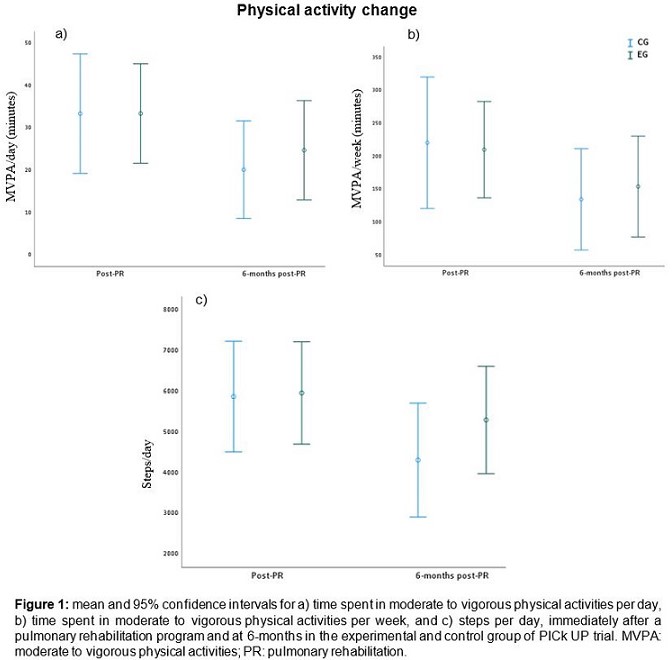Abstract
Pulmonary rehabilitation (PR) benefits tend to decline over time and sustaining physical activity (PA) levels is challenging. This study assessed the effectiveness of PICk-UP trial (NCT04223362) on PA levels of people with COPD.
People with COPD who completed a PR program were included and randomized to the experimental (EG: 6-months of a personalised community-based PA program according to their preferences) or to the control group (CG: standard care). Time spent in moderate to vigorous PA (MVPA) per day and per week, and steps/day were assessed immediately after PR and at 6-months with an ActiGraph (4 of the 7 worn days had to be valid). An intention-to-treat analysis was conducted using linear mixed models (LMM) adjusted for pack-years. MVPA outcomes were log-transformed to fulfil LMM assumptions.
61 people with COPD (EG: n=32, 84%?, 70.1±9.2y, FEV1 59.9±16.7pp; CG: n=29, 83%?, 69.1±7.7y, FEV1 54.5±16.3pp) were included. PA was similar (P>0.05) between completers (EG:19; CG:20) and drop-outs (EG:13; CG:9). Significant group:time interactions (P<0.05) for all PA outcomes were found. There were no differences between groups (P=0.39, 0.34, 0.55, for MVPA/day, MVPA/week and steps). PA decreased significantly only in the CG (P<0.001 for MVPA/day and MVPA/week, and 0.02 for steps)(Figure 1).
Although there were no differences between the groups, PA on EG did not worsen over time.
